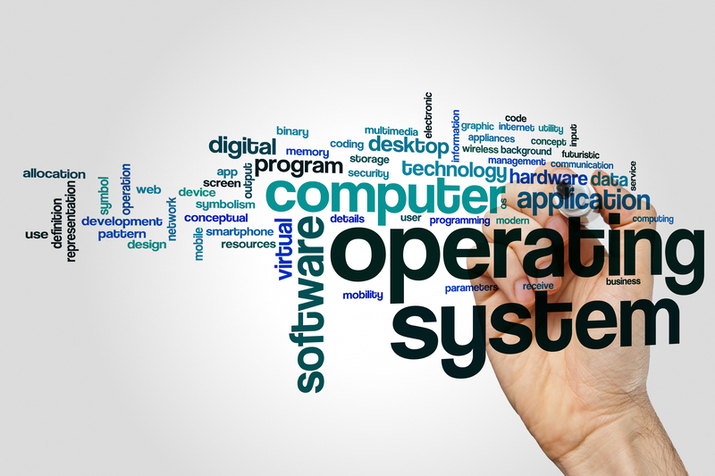
 Data Structure
Data Structure Networking
Networking RDBMS
RDBMS Operating System
Operating System Java
Java MS Excel
MS Excel iOS
iOS HTML
HTML CSS
CSS Android
Android Python
Python C Programming
C Programming C++
C++ C#
C# MongoDB
MongoDB MySQL
MySQL Javascript
Javascript PHP
PHP
- Selected Reading
- UPSC IAS Exams Notes
- Developer's Best Practices
- Questions and Answers
- Effective Resume Writing
- HR Interview Questions
- Computer Glossary
- Who is Who
Web Operating System
The web operating system is a user interface based on the internet that allows users to access computers locally and through the internet.

An operating system is a software that acts as an interface between computer applications and hardware. Web operating system does not directly interact with computer hardware, it is a dummy operating system. Instead, it depends on a traditional operating system for its work. It acts as an interface for systems that are distributed, for instance, distributed cloud computing systems like a cloud. Web OS are created using AJAX and FLASH.

AJAX (Asynchronous javascript And XML) is a set of technologies used to create asynchronous web applications. These web applications can send and retrieve data from a server in the background without disturbing any other web page, in the form of small bits of information.
Flash files stream over the internet, the hassle of downloading the whole file to the computer before accessing parts of it is reduced. Flash enables users to create interactive web pages. It is a vector animation software, originally designed to create animations on web pages using vector graphics. Over the time it has become more and more controllable via programming .
How web operating system works
An operating system is a special kind of program that organizes and controls computer hardware and software. Operating systems directly interact with computer hardware and serve as a platform for other applications. Whether it is Windows,Linux ,Unix or Mac OS X, your computer depends on its OS to function. A web operating system is a user interface(UI). It might minimic the user interface of traditional computer operating systems like windows, but it does not interact directly with the computer's hardware.
Workcycle of a Web OS
Initially a request is made by the user to run a particular program, along with specified data.
It might reside anywhere on the web when a request is passed on to the closest educational engine.
If it has requested a program the engine performs a search in its resources to check.
Then it checks whether the local system can meet quality of service parameters or not.
After that engine might reject the request or pass it on to other educative engines as well until one of them finally accepts it.
Other than this, any web operating system user should be able to share his local resources with other users. Thus efficient strategies for searching and communicating are required.
Mainly two searching strategies are used
Serial request strategy ? In this strategy requesting machine sends request containing rest of machines on list, to just one of machine on list, thus network load is comparatively very less. If the program's service requested is available on this machine it sends back a positive message, else it passes on request to any one of the machines with a list of all machines remaining and so on.
broadcast strategy ? by requesting machine passes on request to every machine on list. Each of these machines then sends back messages. If the list contains n machines there will be 2n messages generated, n from requesting machines and other n from machines on the list as positive or negative.Thus in this strategy network load is high.
Different type of Web OS
Below is the list of different types of web operating systems.
GHOST ? G.HO.ST stands for ?Global Hosted Operating System", is a very computer type web operating system .G.HO.ST offers free space of 15GB for data storage and a very professional sharing mechanism.
Eye OS ? Eye OS is among the first web operating systems. One of the main features making it distinct from other web OS is that it could be either used by making an account on the server of the Eye OS or the user can download its application and use it on his own computer.
JoliCloud ? JoliCloud is a web OS having its diversion towards the social network .Apart from the applications it provides, it gives a rich interface to connect all social media at one place.
iCloud ? Through iCloud users can manage the content of their handheld devices like iphone and ipad. Users have the power to virtually access all their data from anywhere. Apart from this, the user can have 50GB of storage space.
Glide OS ? Glide OS is a very famous operating system. It offers a windows computer like interface and accessibility to access it on computer as well as mobile phones. It gives users 10GB of space to store data.
Applications and Features of Web OS
A web operating system allows you to access applications stored not on your computer but on the web. You can access the web operating system on one computer, create a document, save the work and then access it again later using a completely different machine. Web operating systems can give users access to practically any program they could run on a computer's desktop.
Common applications include ?
Spreadsheet programs
RSS readers
Games
Calendars
E-mail
Word processing programs
File management
Photo, video and audio editing programs
Instant messaging programs
Features of web OS
Different feature offered by web OS are;
Storing documents
Calendars and reminders
Application can be installed
Calculator
Storing data like video, image and audio
Storing contacts, notes
Conclusion
In this article we learned that a Web operating system is an internet based user interface that allows people to access applications not stored on their computers but completely or partly on the internet.

